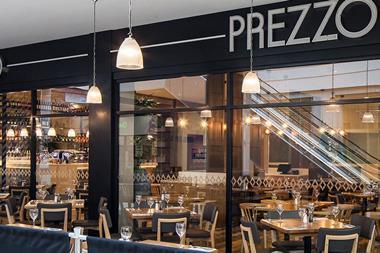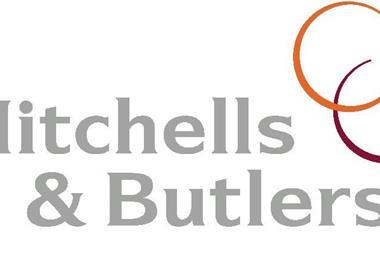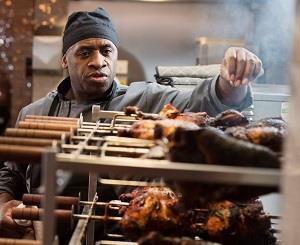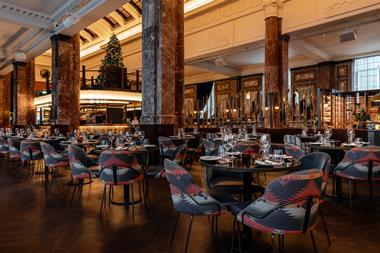There was an oversight at MCA’s annual Restaurant Conference, which took place last month. It was an oversight that some of the leading operators quietly pointed out to me; we had forgotten to mention a growing brand that was having an impact on the performance of parts of their estates – Mitchells & Butlers’ (M&B) premium steakhouse concept, Miller & Carter. We take a closer look at the concept this morning, plus the speculation surrounding Prezzo and the Casual Dining Group (CDG).
Miller & Carter was a parting gift to Mitchells & Butlers (M&B) from its erstwhile employee and one of the pub sector’s key innovators, Tony Hughes. Launched in December 2006 as a modern steak-house brand, the estate grew quickly to 11 outlets in the first year. In 2008, M&B acquired 44 pub-restaurants from Whitbread as part of a £78m asset-swap deal, enabling a second round of expansion with ex-Beefeater sites naturally suited to Miller & Carter branding.
Since 2008, other M&B chief executives – and let’s be honest there have been a few over the last nine years – have focused on other brands to try and help them make their mark at the managed operator. It has taken current incumbent Phil Urban and his predecessor Alistair Darby to really see the value of the group putting its shoulder behind the concept.
In 2013, Darby told me: “We get a great ROI from Miller & Carter and it sits right in the middle of the special dining occasion category. When people look for value, price is the key motivator, but when they want premium, like Miller & Carter, price is just part of the equation, the operator has to earn that price point through the offer, environment and service. We are ready to put our shoulder behind Miller & Carter in terms of expansion capital.”
At the time, the group had opened its 30th site under the concept and had previously said it would look to grow Miller & Carter to a 50-strong estate. On Urban’s arrival into the top seat, that figure was pushed out to 100 sites by the end of next year. The company is well on track to hit that target. It currently operates 83 sites under the concept, across a wide range of locations including shopping schemes, retail and leisure parks.
As with the Whitbread acquisition, the group, like any multi-branded operator, has the potential to switch to a more relevant brand format to maximise the potential of strong locations. M&B has done just that picking of sites in the former Orchid estates but also from brands such as Harvester and Toby Carvery, aiding the rapid expansion of the concept in recent years.
Speaking last year about the brand, Urban said: “If we give the consumer a compelling enough proposition as part of that business, they will trade up. I think one of the best examples is where we have converted a Harvester to a Miller & Carter, whilst it is a premium steak house, we still have a lot of Harvester customers come in and enjoying the steak house. Now as a Harvester they are paying £8.50 spend per head, in a Miller & Carter they are spending £17 and enjoying the experience and coming back. So it says to me that consumers are willing to pay for quality if they understand that quality.”
The results from MCA’s latest 6,000-strong Eating Out Panel, included in our new Restaurant Report, finds that Miller & Carter is scoring highly in key performance indicators, ranked first for food and drink quality and food freshness among leading branded restaurants. The is brand is also expected to be the fastest growing operator by sales in the Top 25 branded restaurants for 2017, at 46% to £111m.
What will be the optimum size for the concept? The company says that in terms of optimum estate size, it is continuing to look at new site locations opportunities for the concept within its existing estate, and will continue to search out these opportunities moving forward. It told me: “We don’t intend on putting a cap on the size of the brand but are conscious of maintaining quality.” Or as Urban puts it: “I have always believed that the optimum size of around 130-150 is good. I say that because the managers who operate in those sites like being part of a brand, like to know the figurehead of that brand and like to feel part of a team. Once you get to scale beyond that you start to feel like a number and for the person running those business, once you get past that number the chances of really getting to know your managers and staying on top of that is difficult. So to my mind that is the optimum size.”
The success of the concept, has led the company to trial new format Son of Steak, a more fast-casual little sister to Miller & Carter. One site has opened under the concept in Nottingham (a Harvester conversion), whilst another was mooted for Milton Keynes, although this seems to have been put on the back burner.
Urban said: “Son of Steak and Chicken Society (the group’s other trial format) are aimed at that Millennials market, which we are probably underrepresented in. We are still in the nurturing stage to get them to where we want them to be. It is too early to make a call on whether it is something we are going to roll out. But for me it was establishing that innovation ethos that was important, because that has bred new life into the core brands. The bigger prize for us would undoubtedly be, finding a solution to the assets we own. So Son of Steak, and Chicken Society to a lesser extent, but certainly Son of Steak might potentially become a solution for part of our retail/leisure parks. We also have a number of assets that we have identified that would lend themselves to Miller & Carter but already have a Miller & Carter nearby, so the bigger prize for us would be to find another string to our bow in that space. We may also look to use both concepts in under-utilised space in existing sites, but at present it is too early to make that call. This won’t move the dial in the short-term for M&B but it is important to keep at it.
“I also remind people that Miller & Carter has been around a number of years and it has taken time to get it refined to a model we are confident to roll. That work is ongoing for those two fledgling concepts and turning them into a brand that becomes meaningful.”
As I understand it, the work the group has put into Miller & Carter, means that some of the concept’s sites are generating average weekly sales of up to and in excess of £60,000 – meaningful enough to have its casual dining cousins worried and talking about it in hushed tones.
More room at the top table?
Talking about the recent MCA Restaurant Conference, and the day ended with leading operators and commentators discussing the question: “what next for casual dining?” Sat at either end of the panel that day were Jon Hendry-Pickup, chief executive of the TPG Capital-backed Prezzo and Steve Richards, chief executive of the Café Rouge, Las Iguanas and Bella Italia operator, the Casual Dining Group (CDG). After the speculation over the weekend linking CDG as a possible suitor for Prezzo, it was probably good we didn’t sit them together.
There has been speculation over recent weeks that CDG was beginning to cast its eye over other operators in the sector or “doing some modelling” as one commentator put it. The company has been built on acquisitions and Richards himself told the conference audience that further deals were “always something we are looking at, in terms of what synergies are out there and what momentum a new business or brand can provide. At the moment it is a buyer’s market so the right opportunities might not come up.”
It would certainly have done some modelling around Prezzo, and I wouldn’t be surprised if CDG had made an initial contact with TPG, but whether anything will come of that is way too early to say. TPG has not had the easiest time with its c£300m acquisition from the Kaye family. Talking on the same panel, Hendry-Pickup touched on the amount of work being carried out on Prezzo’s structure and building a culture, after the business was for years operated with small head office team. That process is going to take time, but this is exasperated by having to carry out this work in the current challenging environment with an established, mid-market, casual dining brand.
The sense is that TPG has not gone out of its way to invite interest in the business, but wouldn’t be too unhappy to exit for the right price. But what would CDG, if they do firm up any interest, gain from such a deal? Head office synergies probably and a further brand to that they can grow or convert to existing or new concepts. At the same time, it is another brand that the group can look to franchise overseas, an area it is putting most of its energy behind at present. Those cynical amongst us may suggest that if it did acquire Prezzo it would be adding an under-performing brand to a stable that already has some of those, therefore creating more problems than solutions.
The industry is ripe for further consolidation, but some of the possible combinations at present don’t look that appetising for all involved.

































